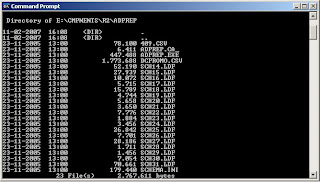There are several reasons for needing an additional Domain Controller. As it will hold a replica of the Active Directory, the Group Policies and login scripts etcetera, it can be used to serve a remote location like a branch office. The additional DC is also used in the Swing It migration from Jeff Middleton to migrate a domain while upgrading to a newer SBS version or new hardware. It doesn't matter if you are still running SBS 2000 or SBS 2003 with or without R2, you will need to prepare the AD Forest as described in this article.
You can NOT use the SBS media for installing an additional server or Domain Controller, you will need to purchase a plain Windows 2003 server license and media. As you can only get R2, you will be looking at upgrading the Active Directory Schema, as it is different from Windows 2003 server RTM.
You will need the second R2 CD from the plain Windows 2003 R2 server media kit and use that on the SBS server. You need to login as the administrator on the server.
1. Open the command prompt on the SBS server and navigate to the CD drive. Then navigate to the Adprep folder with: cd CMPNENTS\R2\Adprep

2. Type the following command to prepare the Active Directory Forest: adprep /forestprep

3. Assuming there are no Windows 2000 domain controllers that are not up to date with SP4, type C and press Enter:

4. Depending on the SBS version, it can take 5 to 10 minutes before the command has successfully finished:

5. The Active Directory is now prepared for additional R2 domain controllers, and the Directory Service event log will show a bunch of 1137 events that were logged during the adprep operation:

If you already have other domain controllers in the network, you will need to update those with:
- adprep /domainprep
This command will be finished a lot quicker. You are now ready to add additional Domain Controllers that will be running Windows 2003 R2.
No comments:
Post a Comment